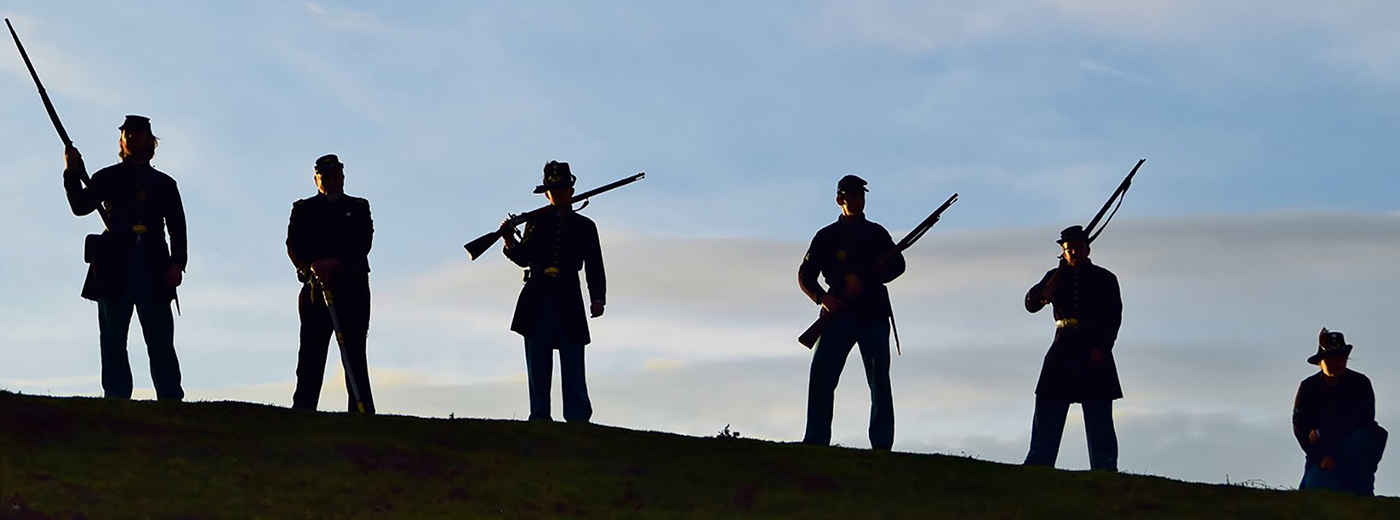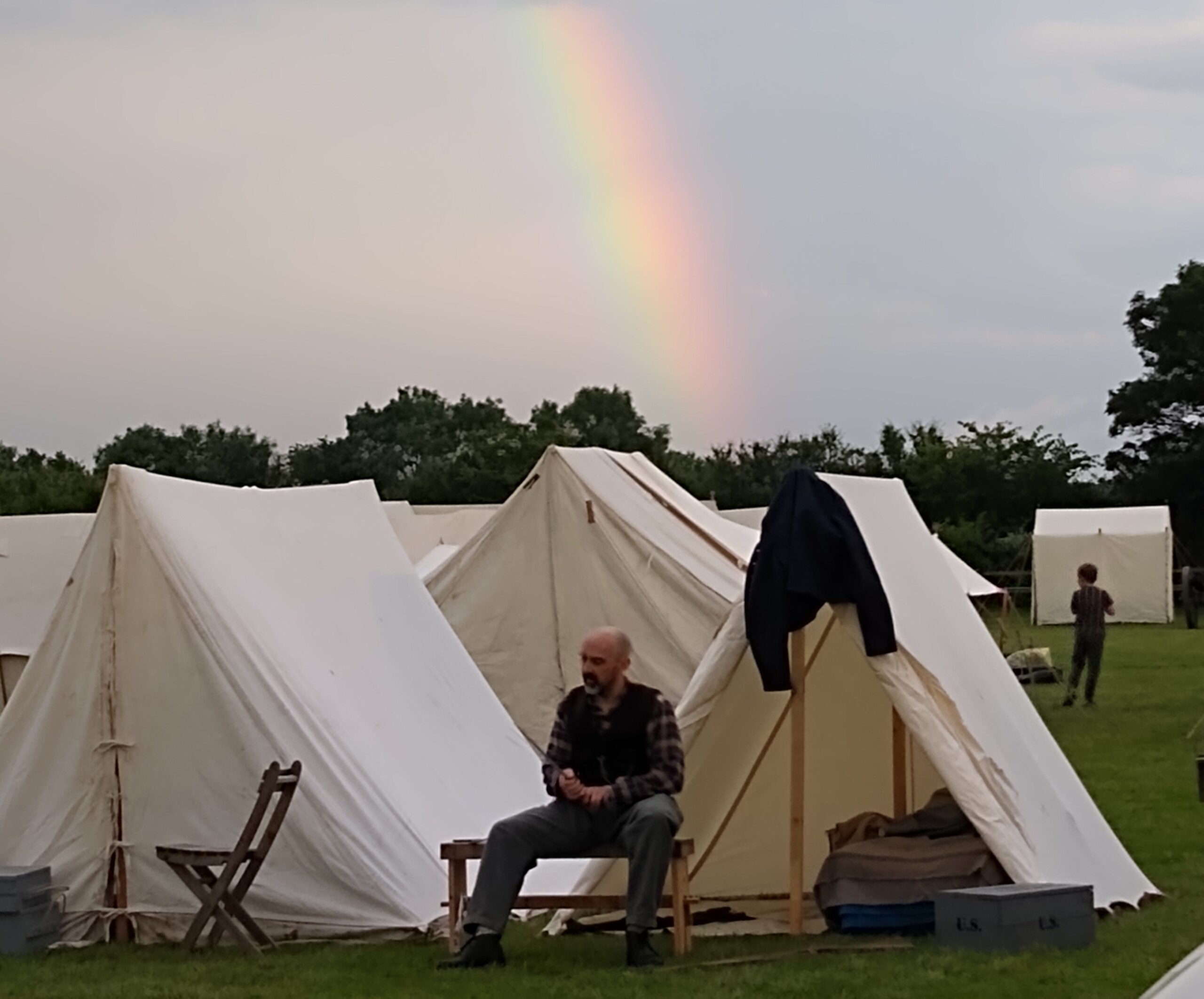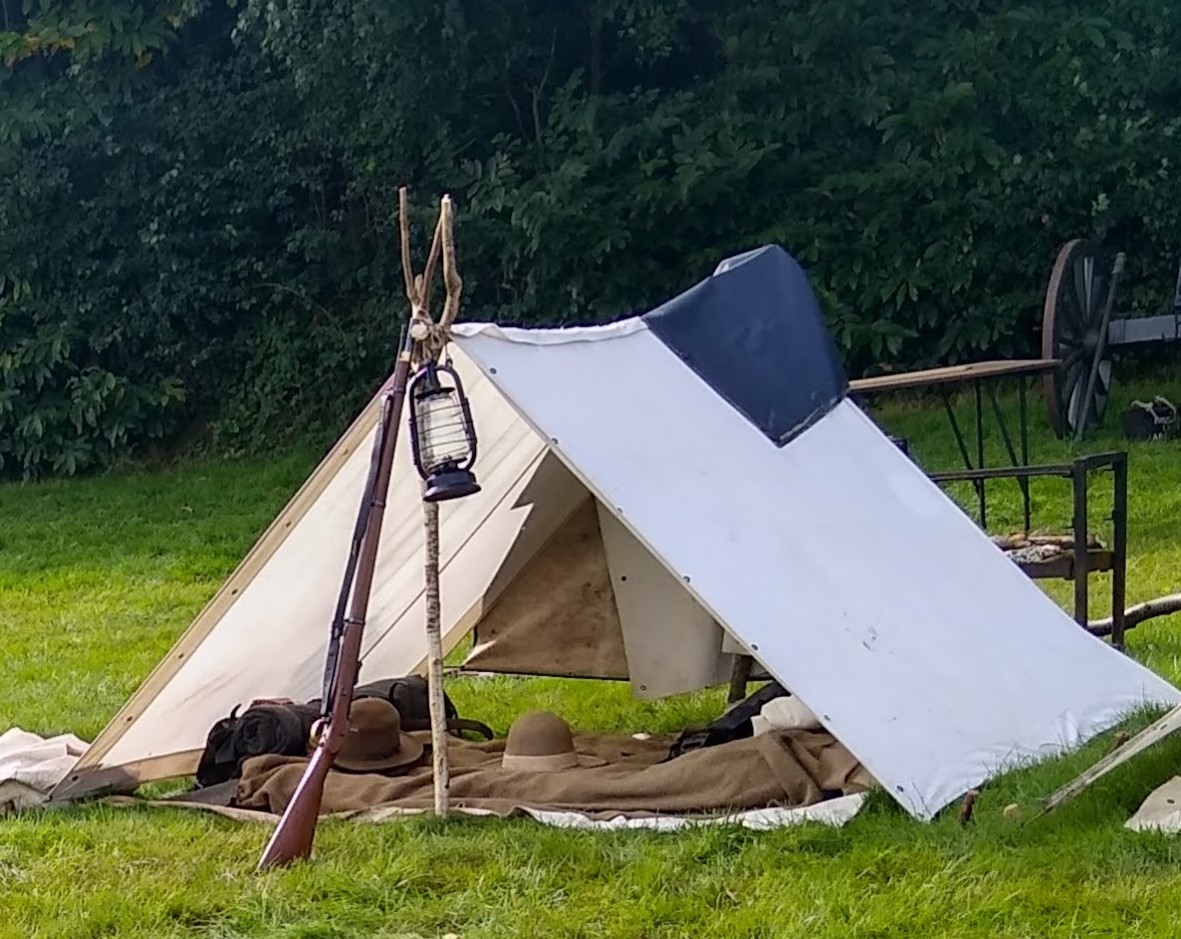WELCOME TO THE 4th U.S. INFANTRY
1861 – 1865

AMERICAN CIVIL WAR
ENCAMPMENT
Camping:
At most events there are two camp sites, modern and living history camping. Many re-enactors start by camping in modern tents, caravans or car camping within the modern camp area, before deciding to try the living history camps. Some reenactors like to either day trip or stay at hotels, the downside to both these options is that it can be quite expensive and you may miss out on the evening activities and camaraderie that happens around the fires within the living history camps after the public go home.
Although our re-enactments are for the whole of the weekend, our living history displays for the public are generally from 9:30am to 6:00pm. This means that during this time all modern gizmos and gadgets are required to be hidden from view of the public. However, we do not ask or expect you or any family members to live in period for the whole weekend, although most re-enactors and fellow members of the 4th will do so by choice!
Living History Camps
Where to sleep? What about the family? – At our re-enactments we are unable to provide a separate living history area for a civilian camp and with more family involvement in re-enacting, both our regiment the 4th U.S. Regulars and Soskan welcomes civilians to do ‘period style’ family camping within military lines if they wish to.
When doing living history camping try to keep it simple, the more modern stuff you bring, the more you will have to hide away during the day and this does cause storage issues when in an ‘A’ frame tent. Try to keep things in period boxes and bags, that way they can be left outside your tent and can also double up as either a seat or a table if need be!
Personal Tent for Living History
The tents the 4th U.S and Soskan use within the military lines are white canvas A-Frame tents (6x6x6 approx) or a shelter halve wedge also known as the dog tent (66” x 63”). Which is basically a two smaller pieces of canvas to buttoned together to make a tent. And apart from the Officer’s or Company Wall tent we encourage all our members in the regiment to use A frame or Shelter halves within the Union Camp. This way, from a distance, both Soldier and the Civilian tents looks just like a normal military company street.
If you want to try living history and choose to sleep on site, then the company a limited number of A-frames tents that can be made available for use for the first few events, you must let the Company Officer/coordinator know prior to an event that you will need to borrow/share a tent as there is always a possibility that there may not be enough tents available. So we encourage you to get your own tent as soon as possible and it is expected that by the beginning of your second year, you have purchased your own tent. There are several Sutlers (Retailers) in the UK, Europe and the States who make white canvas tents at reasonable prices. (Some of these are listed in the links page)
Please remember it can take a while to gather or purchase all the stuff you will need for living history camping. We all understand how expensive this hobby can be and that your investment during the early part of your first year will be focused on your basic wardrobe and then you will want to purchase a tent.
Basic Camping Essentials - What do I need to bring?
Sleeping Bags
Get a well-padded one that works and keeps you warm; it gets very cold at night
Blankets
Bring plenty of blankets for both on top of and under your sleeping bag; some civilians will make patchwork quilts for their bedding
Sleeping bag pads
Cushioned or inflatable pads are great at keeping you comfy, or if you prefer a little more luxury, bring a camp bed.
Ground Sheet
A green waterproof ground sheet to keep your bedding dry, also canvas floor covering to cover ground sheet and to keep you and your families feet warm.
Wooden Boxes
Ideal for hiding all modern items, also useful as seat round camp or table in tent
Canvas Bags
Bags are great for carrying and hiding modern items. They are very easy to make; but if you aren’t very skilled at sewing, then use plain white cotton pillow cases or sacking until you can buy some bags.
Cooking Utensils & Lighting
Small cast iron or tin cooking pot, coffee pot and or mucket (mug with lid) Lanterns, try to use period lighting around the living history camp where possible; most re-enactors will use modern lighting within their tents (for safety), but please bear in mind that any light in the tents silhouettes those inside.
Wooden Stool Or folding Chair
Period looking furniture can be hard to find, but not impossible, so do your research before you buy. Many people use boxes or logs to sit on, until they can buy something that’s period correct or suitable
First Aid Kit & The Bare Essentials
Always a Good idea to bring small personal first aid kit Toilet Paper, hand sanitizer, wet wipes and wash cloths, towels, toiletries bag, tea or coffee, bottled water for drinking/washing and sun cream to avoid sunburn.
Chamber pot
Chamber pot Certainly A most crucial item for the civilian reenactor, especially if you have ‘little-un’s’ and don’t want the 4am trip to ‘the ablution hut’ or ‘the necessary’ or ‘Confessional’ which are just some of the names we use for the beloved or dreaded portaloos!

